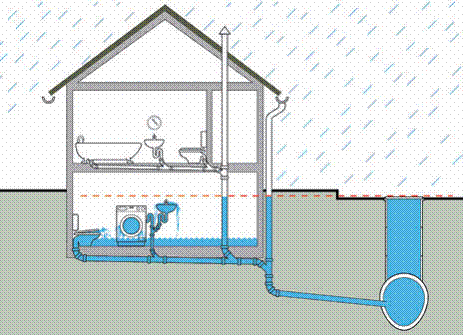What is a condensate pump and in what case you need it?
- how is condensate formed?
- how a condensate pump works
- special features of the condensate pump
A condensate pump helps to collect and pump out the condensate produced by a heating system. But why is wastewater produced in my heating system and why is not any pump sufficient for disposal? We answer all questions about the condensate lift pump in this article.

Source: weinmann-schanz.de
How is condensate formed?
Modern condensing boilers that run on oil or gas have now proven their worth. They use the energy provided more efficiently by also utilizing the exhaust gases produced. However, during this process the water vapor is condensed and condensate is formed that must be gotten rid of. This condensate has a low pH, which can be a challenge to dispose of. In new construction this is usually taken into account and the heating system is built close to a drain, however in retrofit this is not always possible and the nearest drain is too far away. In this case, you need a condensate pump.
How the condensate pump works
Usually, such a pump consists of three main components: a collecting tank, in which the water is collected, the motor, which transports it and a backflow preventer. The backflow preventer ensures that no water escapes in the event of a defect. Since the proportion of condensate produced in condensing boilers is quite high, the water initially collects in the collection tank. If enough is collected, the motor switches on and transports everything to the nearest drain. Usually, the waste water in the drain is sufficient to dilute the condensate to a point where it is harmless to the plumbing. However, above a certain capacity of the system, legislation requires the installation of a neutralization device that neutralizes the condensate.

Source: bosy-online.de
Special features of a condensate pump
Due to the low pH value of the condensate, the materials used must be resistant to acidic liquids. If this is not the case, the components react with the condensate and the pump wears out. Another peculiarity is the neutralization device already mentioned, which protects the drain from corrosion if too much condensate is produced. In addition, the condensate pump prevents the drain from overflowing if a blockage occurs in the street sewer by raising the water above the backwater level. The backwater level is the highest possible point for the wastewater to reach before it overflows. For this reason, the Kodnensat pump is also called a condensate lift pump.
Conclusion
A condensate pump is essential if you have a condensing boiler that is not close enough to a drain. The pump helps the condensate to flow back to the drain and at the same time prevents the overflow of your drain in case of backwater. A simple condensate pump is available from a price of 70€. If you need a neutralization device, the whole thing can be quite a bit more expensive.


